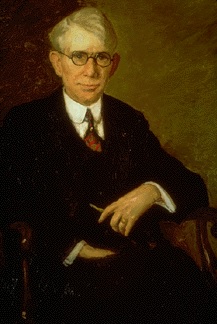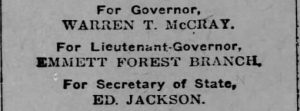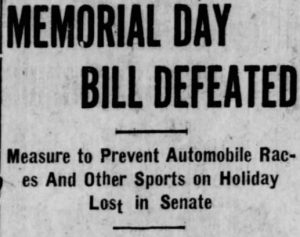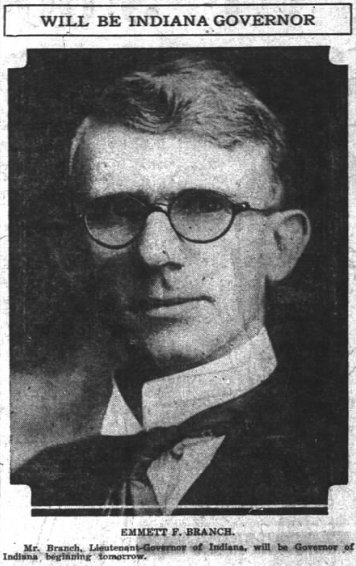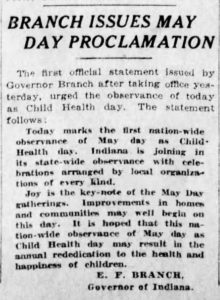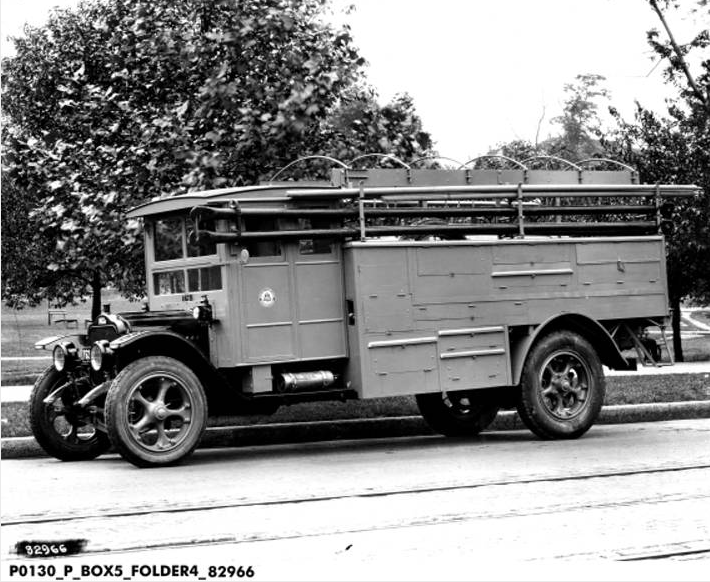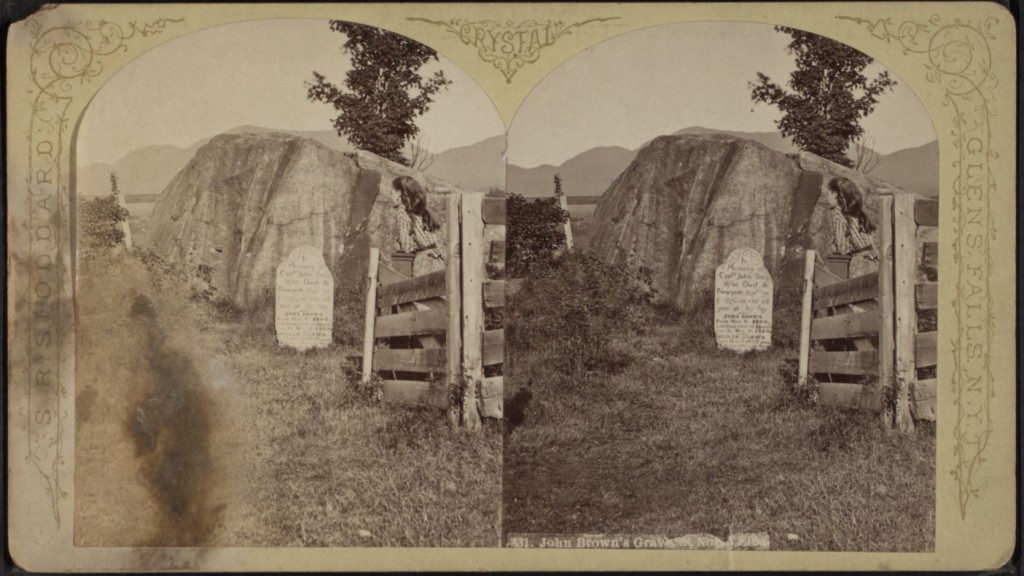
When the fiery abolitionist John Brown, “The Meteor” who tried to ignite a slave rebellion in the South, was hanged for treason, authorities turned the body over to his family. In December 1859, Brown’s remains traveled north by train from the hanging grounds in Charles Town, Virginia, to the family farm in New York’s Adirondack Mountains. Around Christmastime, he was laid to rest next to a huge chunk of Appalachian granite.
Twenty-three years later, a Hoosier geologist who studied such rocks for a living helped ensure that one of John Brown’s fellow raiders at Harper’s Ferry — his son Watson, who was gunned down during the raid — would finally be buried next to his father. In the meantime, Watson’s bones went on a long odyssey out to the Midwest.
Watson Brown was born October 7, 1835, in Franklin Mills, Ohio. His father, the great abolitionist, moved back and forth between northern Ohio and his native New England several times. After John Brown went out to “Bleeding Kansas” to fight the extension of slavery into the West, Watson left home, too, though he apparently didn’t join in the combat on the Plains. His father and brothers, however — considered terrorists by some — waged war on pro-slavery factions with guns, fire and on one occasion, with broadswords used to brutally murder their enemies to death. A letter from Watson to his mother Mary, written in Iowa in 1856, mentions that on his own way west with a team of emigrants — armed with “Sharp’s rifles and cannon” — they met with ex-slave Frederick Douglass and the reformer Gerrit Smith. Smith, a failed presidential candidate, secretly financed the later raid on Harper’s Ferry. Watson himself may have helped carry caches of firearms out to the Great Plains, guns paid for by New England anti-slavery committees.


John Brown traversed the Midwest many times on trips back East to win the support of reformers like William Lloyd Garrison, Ralph Waldo Emerson, and even Henry David Thoreau. In 1859, Brown and a small band of followers — sixteen white and five black — tried to pull off their most spectacular assault on slavery yet, an attack on the Federal armory at Harpers Ferry, where the Shenandoah flows into the Potomac. The target: 100,000 muskets, to be handed over to slaves for use in a massive insurrection.

Optimistic supporters in the U.S. and Canada originally planned for 4,500 men to participate in the raid. Instead, just twenty-one attacked Harpers Ferry on October 16, 1859. After cutting telegraph wires and taking hostages on nearby farms, Brown’s band moved into town. Local militia, farmers and shopkeepers, opening fire, quickly pinned down the abolitionists, driving them into a brick engine house. Under siege, John Brown sent his son Watson and another man out with a white flag. The crowd shot them. Watson, aged twenty-four, with a bullet just below his stomach, struggled back to the engine house, fatally wounded. He begged his father and comrades to “dash out his brains,” then tried to commit suicide.


The outbreak of the Civil War was still a year and a half away. In fact, the raid was put down by Colonel Robert E. Lee — of the U.S. Army. John Brown was hanged for treason in December. Spectators at his execution included Stonewall Jackson, John Wilkes Booth, and the poet Walt Whitman.
Ten of Brown’s men died in the raid, including two sons. What became of their mortal remains is a fascinating and rarely told part of the tale.
Eight of the bodies were gathered up by townspeople of Harpers Ferry. The locals didn’t want the raiders buried in the town’s cemetery. They gave a man named James Mansfield five dollars to take care of the corpses.
Packing eight men into two large wooden store boxes, Mansfield buried them along the Shenandoah River about a half-mile from town. The grave, half forgotten, remained there until 1899, when Dr. Timothy Featherstonehaugh, Captain E.P. Hall, and Orin Grant Libby, a history professor at the University of Wisconsin, exhumed the corpses for transfer to the Brown family farm in upstate New York. Professor Libby took femur notes while examining the skeletal remains, comparing them for size against his own leg. On August 30, 1899, the mingled raiders’ bones were re-interred at the Brown plot — in a single silver-handled casket.
 (New England Magazine, April 1901.)
(New England Magazine, April 1901.)
This wasn’t the first time, however, that a box of old bones was brought to North Elba, New York, to lie next to John Brown’s. Two of his followers were never initially buried at all. One of them was his son Watson.
Remarkably common in the nineteenth century, body-stealing was a feature of reality at a time when medical schools had trouble acquiring corpses for anatomy classes. Rarely able to do so legally, they had to steal them, giving rise to the “resurrectionists” who nabbed the dead out of fresh graves.
Yet other examples of body-theft involved mere curiosity seekers and bogus scientists. During the heyday of phrenology — the long-discredited pseudoscience of bumps on the skull, which, it was believed, actually determined one’s personality, creative genius, or propensity to crime — “cranioklepty” (the theft of skulls) was far from rare.
The more famous the head, the better. When the composer Joseph Haydn died in Vienna in 1809, wealthy robbers paid a cemetery attendant to open up the new grave and cut off his head, which “scientists” later examined. Until 1954, the famous skull remained on display in a glass case in Vienna, when it was reunited with the rest of Haydn’s bones. After the coffins of Beethoven and Schubert were exhumed for relocation in the 1860s, their skulls were also examined, as was the entire mummified body of American naval hero John Paul Jones, unearthed in subterranean Paris in 1905 — a hundred-and-thirteen years after he died.
Watson Brown and Jeremiah Anderson — two Midwesterners gunned down at Harpers Ferry — were considered “fine physical specimens.” Southern doctors took them to Winchester Medical College in Virginia, where, like Joseph Haydn, they had (most of) the flesh stripped off them. John Brown’s 24-year-old son, who had left behind a widow, Isabella, and a young child who died in 1863, was turned into a model skeleton for the instruction of future Southern medical men.

Yet Winchester, Virginia, just thirty miles from Harper’s Ferry and the Potomac River, changed hands several times during the Civil War.
In the spring of 1862, two and a half years after Watson Brown’s death, the 27th Regiment of Indiana Volunteers marched into town with the Union Army. Among them was regimental surgeon Dr. Jarvis Jackson Johnson. Born in Bedford, Indiana, in 1828, Johnson practiced medicine in Martinsville, half way between Indianapolis and Bloomington. He would have been 34 when he walked into Winchester Medical College and found out what doctors had done to the remains of Watson Brown — an action for which, Virginians believed, Union troops burned down the college, the only case of arson during Winchester’s military occupation.
In 1882, the Indianapolis Journal printed the most widely-accepted version of the tale. It came in the aftermath of a visit by John Brown, Jr., who visited Morgan County, Indiana, with several other investigators to examine a set of human remains there.
Dr. Johnson had stated that while serving as commander of a military hospital in Winchester, he acquired Watson Brown’s body from the museum of the medical college — then shipped it on a train to Franklin, Indiana, the nearest railroad depot to his home in Martinsville. Like the Virginia doctors, Johnson kept the body in a case at his medical office. For twenty years, the raider’s bones were a strange part of the life of a Hoosier country town.

In 1882, word of the skeleton’s whereabouts came to John Brown, Jr., Watson’s elder brother and the abolitionist’s oldest son, after Jarvis Johnson put a notice in the Chicago Tribune looking for family members. The doctor claimed, probably disingenuously, that he hadn’t realized any of the Brown brothers were still living, and he hadn’t wanted to upset Watson Brown’s mother. Though John Brown, Jr., had fought in “Bleeding Kansas,” he in fact wasn’t part of the raid on Harpers Ferry. During the Civil War, he helped recruit troops for the famous “Jayhawk” border fighter James H. Lane. (Before Lane became an anti-slavery senator from Kansas and a famous target for Confederates, he had been the lieutenant governor of Indiana.)
Brown, Jr., visited Indiana in September 1882, having already moved back east to Ohio, where he grew grapes for the wine business on South Bass Island in Lake Erie and took an interest in geology.

The other main forensic investigator to come to Martinsville that September was one of Indiana’s most prominent scientists, the impressively-bearded State Geologist John Collett. Remembered as a beloved “Santa Claus” figure, Collett was a Wabash Valley native who lived in Indianapolis and often weighed in on scientific and agricultural questions — from the study of caves and killer meteorite hoaxes to how to improve celery crops. Collett traveled to Martinsville with several doctors to look over the badly-treated remains of the bygone Harpers Ferry raider.

The Indianapolis Journal printed this description of the scene at Dr. Johnson’s office:
The body has received careless treatment during the last few years. It has been carted about from place to place, and has been doing duty in all the anatomical exhibitions about town. During the first few years it was in the possession of Dr. Johnson it was in a remarkably fine state of preservation, but ill usage has ruined it. For several years, it has been lying in the Knights of Pythias hall, and, it is whispered, was used in the mystic ceremonies of the order. The best of care had not been bestowed upon it, and it was infested with worms and insects. Knowledge of its ill-usage was sedulously kept from Mr. Brown. When he intimated that he would like to see the body, he was considerately kept in waiting until it could be removed from the lodge-hall to the residence by way of a back street, and there placed in better condition for the examination.
At the time, it wasn’t clear whether the skeleton was that of Watson or 22-year-old Oliver, John Brown’s other son killed in October 1859. Watson and Oliver looked alike. Both stood six feet tall.
An office assistant of Dr. Jarvis’ showed John Brown, Jr., a “coffin-shaped box standing against the wall.” Then he removed a cloth covering, exposing “a bare and hideous skeleton.”
“Gentlemen, if it is either of my brothers, I am now inclined to think that it is Oliver,” Brown exclaimed after picking up and poring over skeletal fragments and examining the shape of a half-missing skull. Yet the more he looked, the more he came to think he was looking at his other brother, Watson.
Geologist John Collett wasn’t a qualified expert in forensic facial reconstruction, a process that would actually be pioneered in the next decade. After comparing all the forensic evidence available, however, including written descriptions of Watson Brown’s gun wound, it was John Collett’s opinion that the cadaver standing before him in Martinsville, Indiana, was, in fact, the man in question.
True to the often bogus science of the time, though, some of the “professor’s” statements expose how ludicrous phrenology was.

Then came a fascinating insight. Dr. Jarvis Johnson’s written affidavit, notarized by Morgan County lawyers, also shed light on why doctors in Virginia wanted to preserve Brown’s corpse in the first place.
When he was put in charge of local Union Army medical operations, “A number of the prominent citizens of Winchester called upon me at the hospital, and each and all declared that [these were] the remains of a son of John Brown.” Amazingly, the doctor who “prepared” the body, whom Johnson never identifies by name, also stopped by — and pleaded with Johnson to give him back this “exceedingly valuable piece of property.”
Like the medieval Europeans who condemned criminals to be drawn-and-quartered, Virginia doctors held up the corpse as a warning to their state’s enemies. Sic semper tyrannis?

Who was this doctor, then?
He was surely on the faculty list — and it’s a small one. Founded by Dr. Hugh Holmes McGuire, Winchester Medical College had only four instructors in 1859, including the founder’s son, Hunter Holmes McGuire (1835-1900). At age 24, Hunter McGuire, already a professor anatomy at his father’s school, would have been an exact contemporary of the “fine specimen” killed at Harpers Ferry.
Hunter McGuire, however, was probably not the culprit. In late 1859, he was studying medicine in Philadelphia. The young doctor was even there during the famous walk-out of Southern medical students, which occurred after John Brown’s body was paraded through the streets by Northern admirers. Insulted, McGuire led an exodus of about three-hundred Southern students from Jefferson Medical College, who dropped out, went down to Richmond, and re-enrolled at the Medical College of Virginia. Some sources say that he financed the trip of all these students with his own savings.
Dr. Hunter McGuire later enlisted in the Confederate Army and even served as Stonewall Jackson’s personal surgeon, amputating the general’s arm after Chancellorsville. He went on to become the president of the American Medical Association. In the 1890s, McGuire would contribute to the debate over eugenics, racial purity, and the castration of rapists, especially African Americans — arguments that eventually led to Virginia’s “Racial Integrity Act” of 1924, a major victory for the controversial eugenics movement and one of the worst misapplications of science in history. He also strove to ensure that Southern school textbooks “would not poison the minds of Virginia schoolchildren” by teaching a northern revisionist history of the Civil War.
The Medical Pickwick (1918) states that Watson Brown was “dissected by students.” McGuire, as stated, was in Pennsylvania in the aftermath of Harper’s Ferry. But did he have anything at all to do with this man’s bizarre fate?
It seems that he did. Mary Greenhow Lee, a famous diarist in Winchester during the Civil War, wrote that when Union soldiers torched the medical school on May 16, 1862, “They buried in the yard what they supposed were [Oliver Brown’s] bones, but the genuine ones had been removed by Hunter McGuire, thus foiling their malicious designs.” Were the bones buried those of Jeremiah Anderson, a native of Wisconsin who fought with John Brown? Lee might have been mistaken about the identity of the bones. It’s harder to believe she was mistaken about Dr. McGuire. After all, he was fighting in northern Virginia and may have been the doctor who approached Jarvis Johnson.
Twenty years later, Johnson willingly handed over to the Brown family the cadaver he claimed to have shipped by train from the Shenandoah Valley to the Midwest. In October 1882, Watson Brown’s strange post-mortem odyssey finally came to an end. On an autumn day in the Adirondacks, he was laid to rest in a patch of soil near his famous father, who — as the old Union song put it — had long lain “mouldering in the grave.”
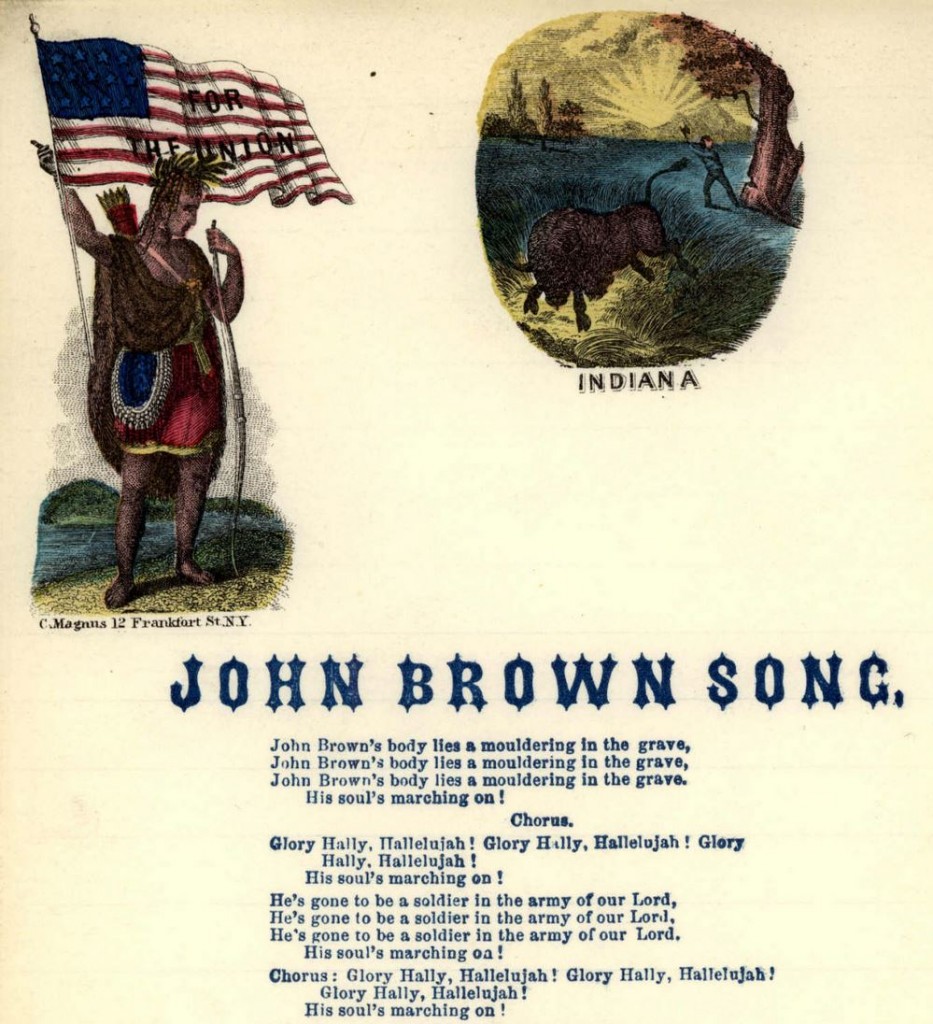
Isabella Thompson, aged just 22 when the Harpers Ferry raid left her a widow, married Watson’s cousin, Salmon Brown. For decades, the couple lived in Kilbourn City, Wisconsin — later renamed Wisconsin Dells. Isabella may have died near Traverse City in northern Michigan in 1907. Her second husband died in neighboring Antrim County, Michigan, in 1921. “Bella” was buried at Wisconsin Dells with Salmon, far away from her first husband, his final whereabouts pinned down at last.
John Collett passed away in March 1899 and was buried in Terre Haute. Dr. Johnson died that September, just a few weeks after the mass re-interment of Brown’s other missing men, among whom was his son Oliver, who had lain in a merchant’s box on the Shenandoah for forty years. Johnson rests at East Hill Cemetery in Morgantown, Indiana.




